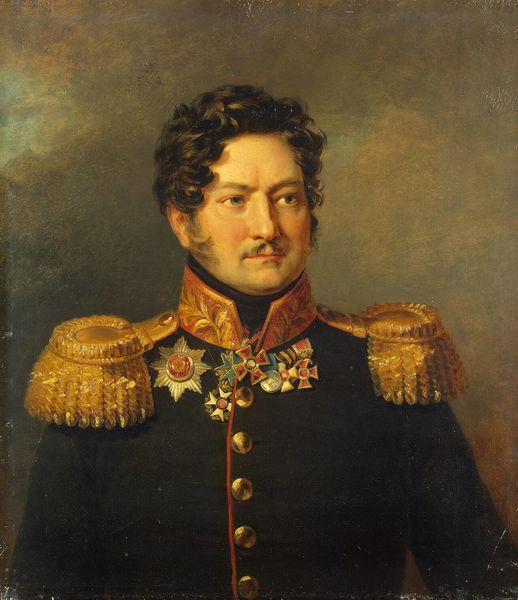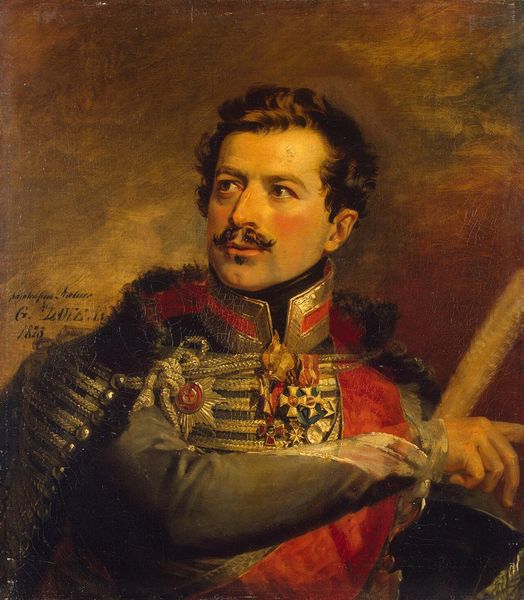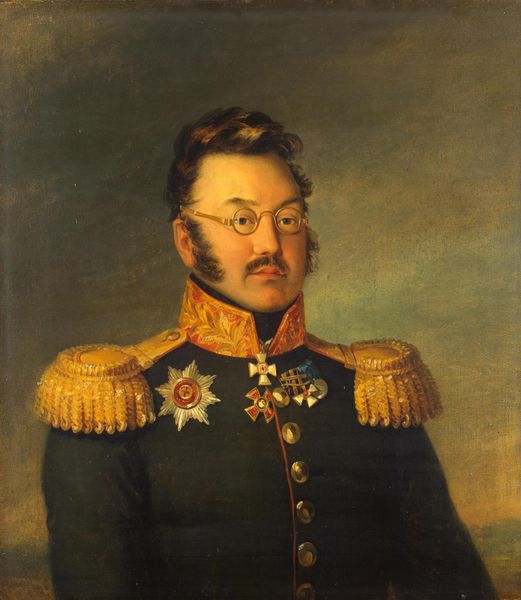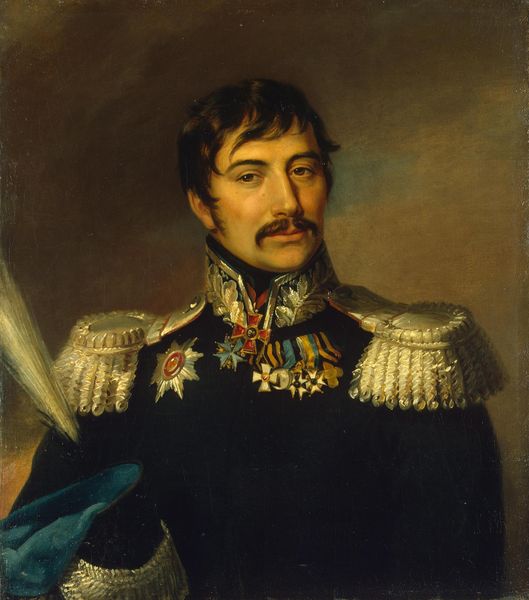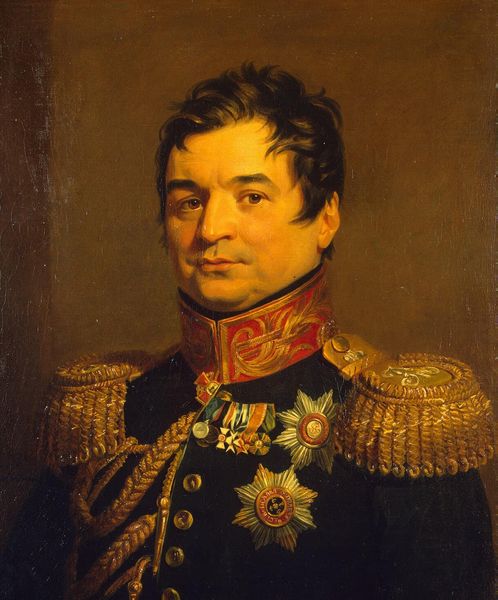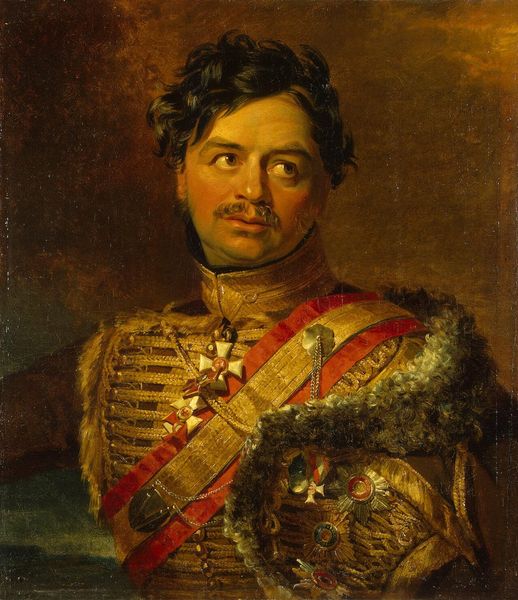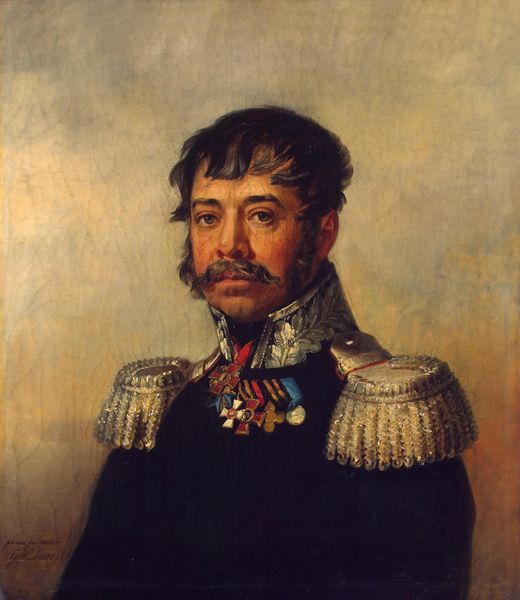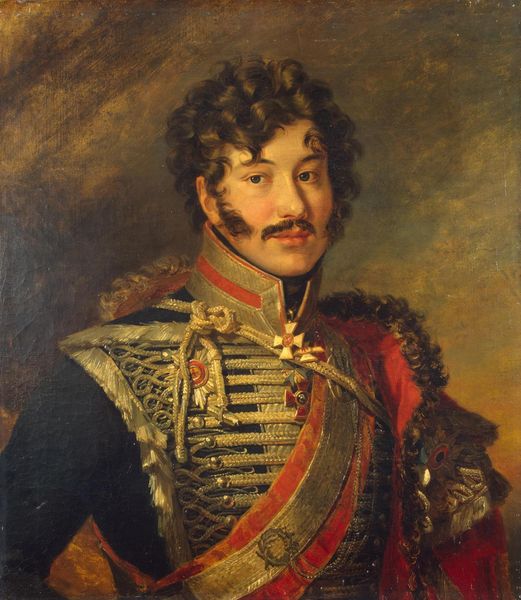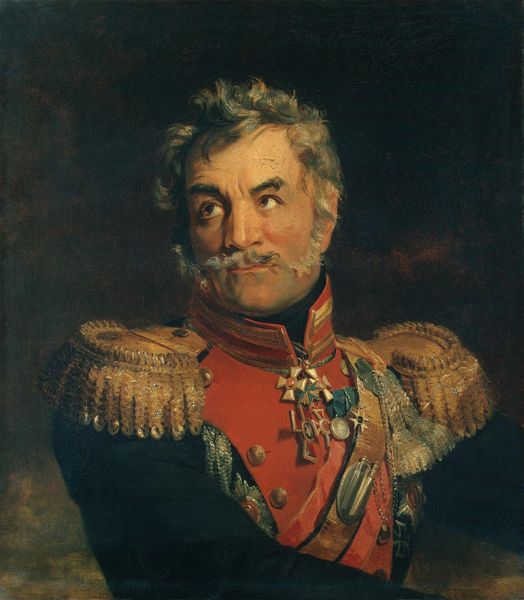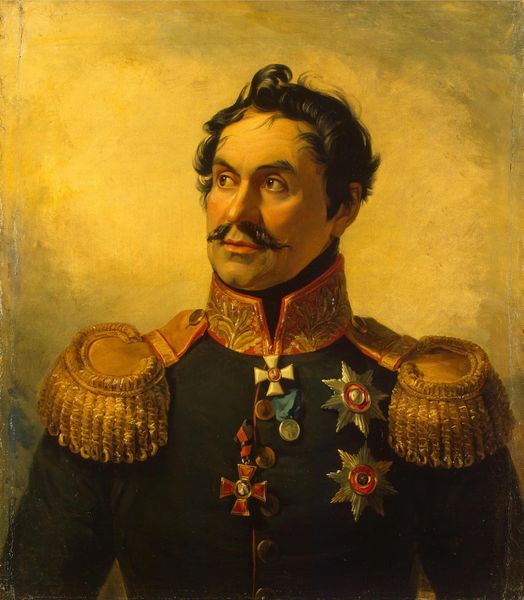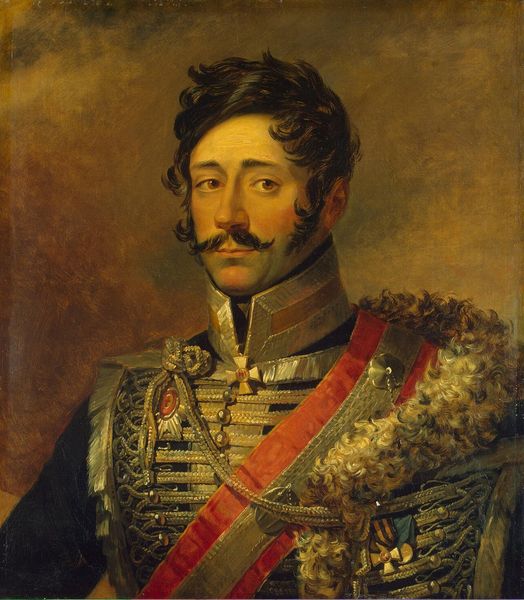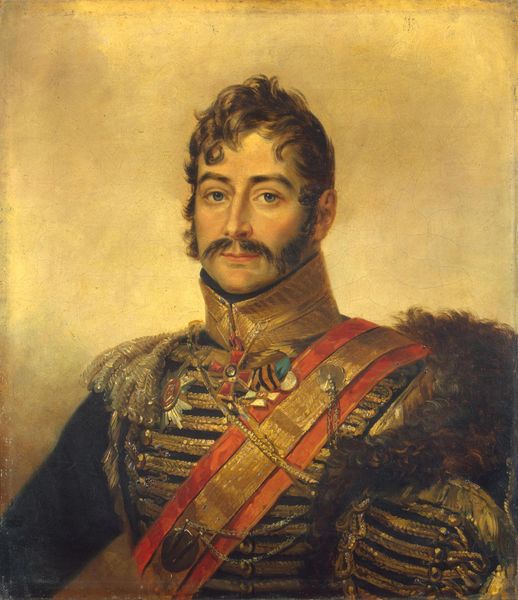
painting, oil-paint
#
portrait
#
portrait
#
painting
#
oil-paint
#
romanticism
#
history-painting
Copyright: Public domain
Editor: So, this is George Dawe’s portrait of Denis Davydov, painted in 1828. It’s an oil painting, and seeing it here at the Hermitage… I'm struck by how it manages to be both formal and yet strangely intimate. His gaze is so direct. What symbols jump out at you in this portrait? Curator: Davydov's gaze, as you noted, is crucial. It invites the viewer into a carefully constructed persona. Look at the medals he wears. What do those signify, beyond mere honor? Consider the semiotics of power embedded in his military garb. They are more than mere decoration; they’re ideograms of courage, loyalty, and service to the Tsar. Editor: I see… The uniform, all those gold chords…it’s such a display, almost theatrical. But I wonder, is it *just* about power? Curator: Ah, an excellent question! The "theatricality," as you call it, serves a purpose. The Romantics embraced emotional intensity. This portrait, through its detail, is meant to evoke a powerful emotional response. Think about the fur collar; it provides textural contrast. Does it not speak to Russia itself? Harsh, unforgiving, yet beautiful? Editor: So the symbols are working together to construct not just an image of a man, but of Russian identity? Curator: Precisely. The uniform and awards, when considered together, present not just the man, but a representation of Russia. It is a complex signifier. What have you gained from our brief dialogue? Editor: I didn't expect so much symbolic weight. I was caught up in the visual details. Now, I understand it goes beyond just that first impression! Thanks!
Comments
No comments
Be the first to comment and join the conversation on the ultimate creative platform.
